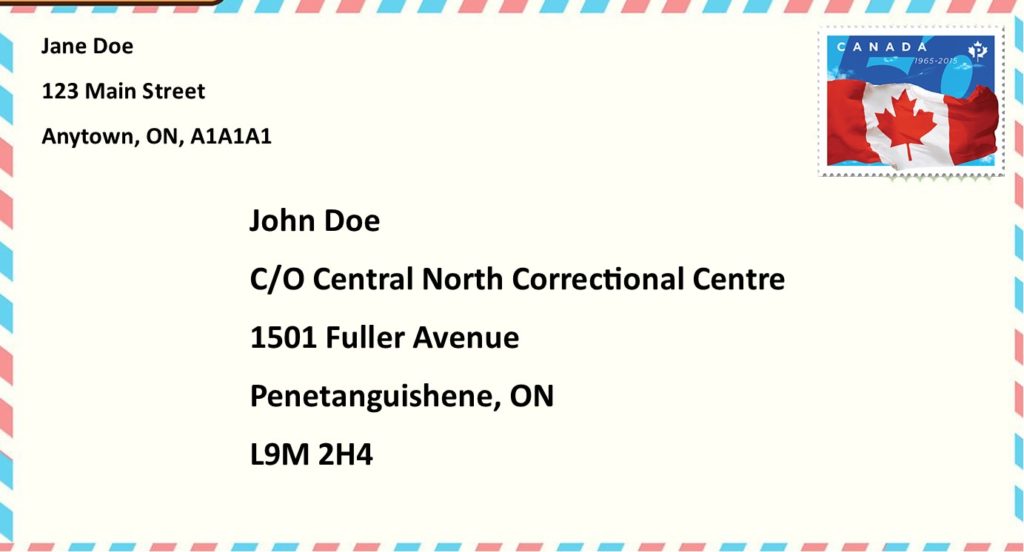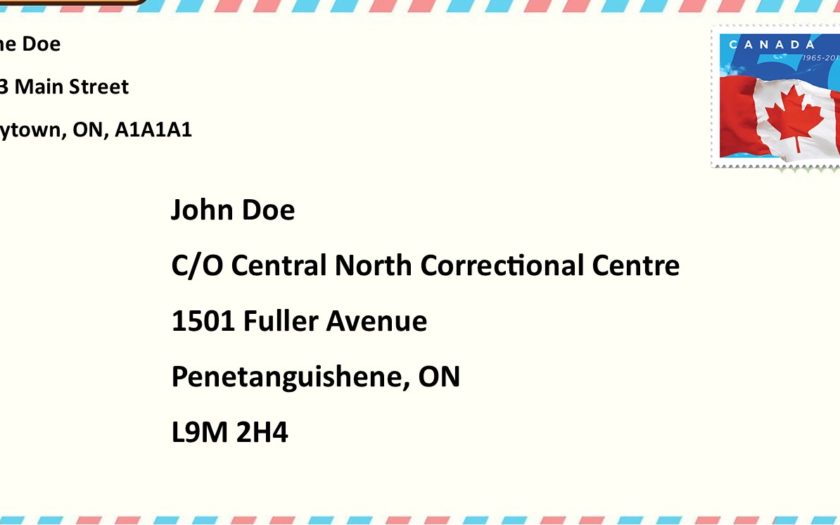Writing letters is one of the most popular ways to keep in touch with incarcerated individuals. This blog will outline the general rules of sending letters to correctional facilities.
NOTE: This is a personal blog, any views or opinions represented in this blog belong solely to the FedPhoneLine staff. WE ARE NOT Psychologists or Therapy Professionals, all data and information on these blogs is for informational purposes ONLY.
Writing A Letter To Someone In Jail Examples
There is no limit to how much mail an inmate can receive unless the amount is seen as disruptive by the correctional staff. In Canadian correctional facilities, inmates can only receive physical mail (no text or emails).
How To Write An Address On An Envelope
When addressing the envelope make sure you have your friend/loved one’s correct name on the envelope.
Below the name, enter the correct address for the institution, click here for Institutional addresses.
Be sure to include a return address on the upper left-hand corner of the envelope, so that your friend/loved one can respond to your letter if necessary.
See a sample envelope below:

Source: https://www.wikihow.com/Write-a-Formal-Letter
How to Contact Someone In Jail Canada
Provincial:
Contacting Correctional Institutions around your local area seems to be the best way to locate your incarcerated friend/loved one.
You can also write a letter to that institution and if your friend/loved one is not at the Institution, the letter (most of the time) will be forwarded to the individual, though your letter may take a few extra weeks to reach your friend/loved one.
Federal:
According to CSC: For privacy reasons, CSC will not disclose the location of an inmate. If you do not know which penitentiary an inmate is located in, you may send your letter to one of our regional headquarters. They will then attempt to forward on the mail. Make sure you include the inmate’s first and last name on the envelope so it can be forwarded on.
National facility directory contains addresses for our regional headquarters.
Mail Inspection
Regular letter mail can be sent through Canada Post or delivered by hand to an institution. Once received the mail will be inspected by the correctional staff and then delivered to the inmate (all incoming and outgoing mail is subject to search).
Usually letters are not read, however there are circumstances when the warden (or institutional head) may authorize intercepting communications.
There are many reasons a letter may be returned to the sender including:
- Anything written in code
- Drugs
- Tobacco and all related products (ie., pipes, lighters, matches, etc.)
- Weapons
- Any sort of electronics (ie., a camera, a mobile phone)
- Stickers, anything glued or taped on
- Revealing photos
- Musical cards (greeting cards that play music)
- Stamps, envelopes, pre-stamped envelopes, or writing paper
- Dried flowers, seeds, feathers, etc.
- Jewellery, charms, etc.
- Telephone calling cards, plastic cards, laminated cards
- Magnets
- Sexually explicit content, inappropriate content such as violence, alcohol, drugs, weapons, or obscene gestures
- Markers, crayons, highlighters, pens, pencils or other sharp objects
- Unknown substances
- Computer disks, tapes, CD’s, cassettes or DVD’s
- Paintings or anything painted on
- Tattoo paraphernalia
- Material which promotes hatred of any identifiable group
Source: https://www.csc-scc.gc.ca/family/003004-0005-en.shtml
Contact the Institution if you have further questions about what can and cannot be sent to an Institution. Also, read our blog regarding sending money to a friend/loved one and also to liven up the conversation read our blog about fun things to write about.
Letters are a good way to keep in touch, but it usually takes 1 or 2 weeks for your incarcerated friend or loved one to receive the letter. Phone calls are a faster way to speak with incarcerated individuals.
FedPhoneLine Number
The most convenient and best way to save the most money is with a local calling service like FedPhoneLine. With a FedPhoneLine number you can easily save money on expensive prison/jail phone calls. Click here for more details or watch the video below:

